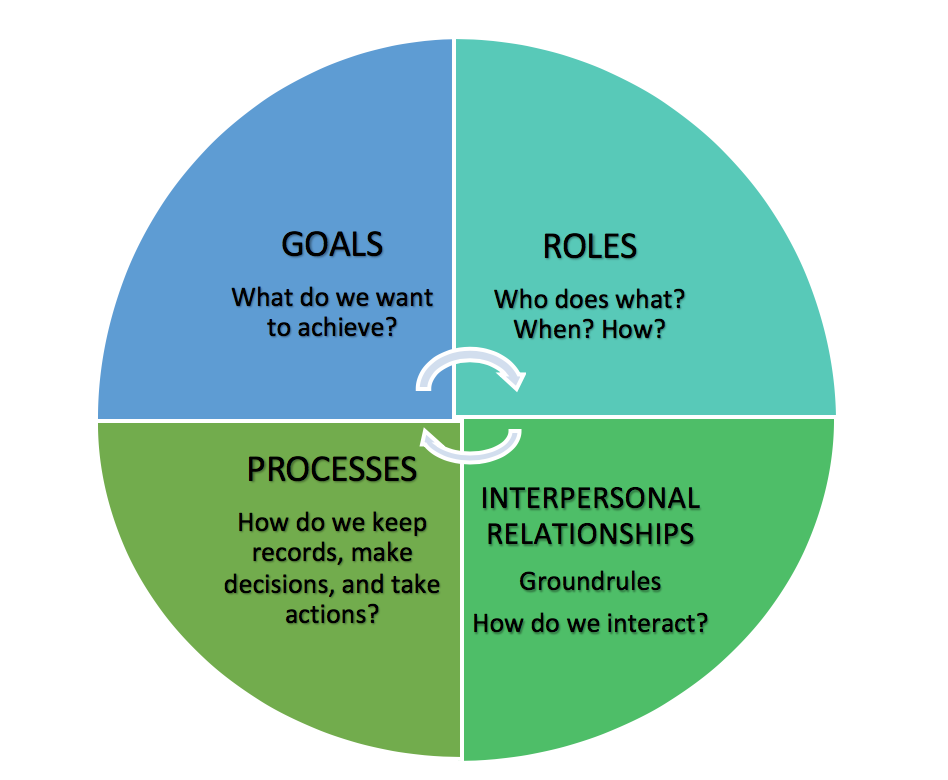4. TEAMWORK AND COMMUNICATION
4.4 GRIP Model
GRIP Model
Richard Beckhard’s GRPI model,[1] originally developed in 1972, has been widely adapted in sports contexts as the GRIP model (see Figure 4.4.1), outlining four interrelated components of highly effective teamwork:
- Goals: everyone must fully understand and be committed to the goals of the team, and of the organization. Everyone’s goals must be aligned in order to establish trust, make progress, and achieve desired outcome.
- Roles: all team members must know what part they play, what is expected, and how they are held accountable and responsible.
- Interpersonal: quality communication and collaboration require and foster trust among team members; sensitivity and flexibility needed to deal with conflict and make progress.
- Processes: defined system for how decisions are made, how the team solves problems and addresses conflict; defines work flow and procedures to be followed in completing the project.

Review the components of the GRIP model and then use the H5P interaction to test your knowledge. Drag the correct description to the appropriate component.
The next model for understanding team dynamics is the Thomas-Kilmann Conflict Model Model.
- R. Beckhard, (1972). “Optimizing team building efforts,” Journal of Contemporary Business, 1972, pp. 23–27. ↵

